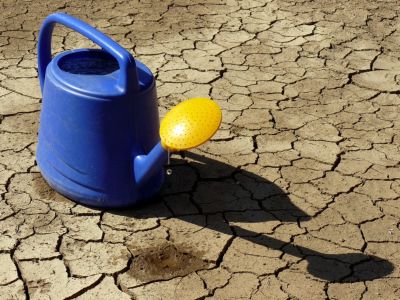How to Grow Edible Plants and Flowers in the Desert
Before growing plants in desert climates, consider the following list before attempting to grow plants in a desert climate:
Soil Nutrition
There are a number of factors to consider before growing plants in a desert climate. Primarily, one will want to be concerned with the nutrient levels in one’s soil. Although a good quality organic/compost will usually meet your soil’s needs, the best way to determine levels suitable for desert vegetables and flowers is to have the soil tested. However, there are generally three primary nutrient requirements:
Nitrogen Phosphorus Potassium
The amount needed of each of these is based on what types of non-drought tolerant desert plants you will be growing. Vegetables need quite a lot. Fruits and annual flowers need a medium amount and deciduous shrubs, herbs, and perennials require even less. Since manure has a high amount of soluble salt, it is not recommended due to the higher amounts already present in desert irrigation. Choose an amendment that does not include manure. Also as arid soils tend to be very alkaline, it may be necessary to lower the pH to facilitate the growth of healthy edible plants and flowers in the desert. This can be accomplished by the addition of sulfur.
Light Amount and Duration
Light amount and duration for growing plants in desert climates is another important consideration. Light is integral to growing a bountiful garden in any climate. Generally, six to eight hours of full sun is needed each day. When growing plants in desert climates the amount of light can be an issue in that there is plenty of it! Many non-drought tolerant desert plants may be susceptible to scalding and tip burn. It’s advisable to protect vegetable and flowers that grow in a desert climate from extreme heat and light by using an awning or shade cloth. These more delicate edible plants and flowers in the desert must also be shielded from the sometimes fierce desert winds.
Water Access and Irrigation
Access to water and irrigation of edible plants and flowers in the desert is crucial. When growing desert vegetables and flowers, a drip or soaker hose irrigation is considered the best and least expensive option. Placement of the plants, day and evening temperatures, and the variety of non-drought tolerant desert plants selected will influence the amount of watering needed, though on average these plants require at least 2 inches (5 cm.) of water each week. In a desert environment, you should expect to water plants a little more, even twice daily, when both day and evening temperatures are excessively hot.
Selection of Edible Plants and Flowers
Lastly, one of the most important requirements is the selection of non-drought tolerant desert plants suitable to this more uncompromising environment. During the cool season, some options for vegetables that grow in the desert may include:
Beets Broccoli Cabbage Carrots Lettuce Onion Pea Potato Radish Spinach Turnips
Warm season vegetables that are most optimal for growing in desert climates may include:
Beans Cucumber Eggplant Melon Pepper Pumpkin Squash Corn Sweet potato Tomato
The variety and time of year when vegetables that grow in the desert are sowed will dictate the type of garden formation that is most desirable. Hill planting, broadcasting seeds, inter-planting, or relay sowing in two week intervals are all viable options for the desert gardener. The previous information and a definitive amount of human muscle power to crack the harsh desert landscape will lead the gardener down a successful and fruitful path to growing plants and flowers in desert climates.
